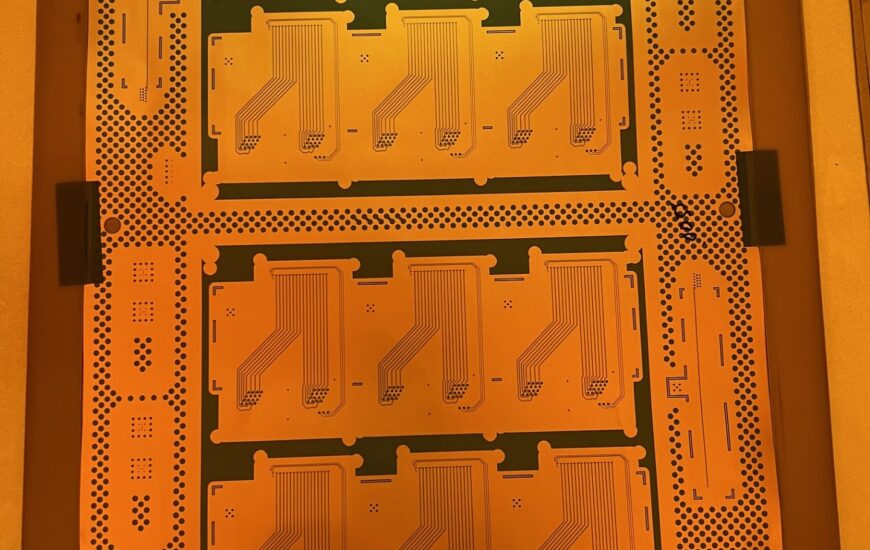There’s a lot you can do with a 12″ X 18″ sheet of material. At Flex Interconnect Technologies, we think we can do just about anything with it.
Over the past few years, we’ve implemented numerous continuous improvement initiatives throughout our company. One of the places where that’s most visible is in how we handle materials.
In 2020 we decided to standardize our material sizes. Eventually, we settled on using 12″ X 18″ material size as a standard way of producing flex and rigid-flex circuits, regardless of the overall job quantity. Today, we use the 12″ X 18″ size for everything from quick-turn prototypes to larger production runs.

After implementing this standard material size, we soon realized several advantages:
- It simplified storage and inventory, as we now primarily only stock 12″ X 18″ sheets of materials pre-cut by our suppliers. This reduced our handling of material, which can cause lower yields from inadvertent damage in the materials from handling.
- It simplified our tooling process. By standardizing our tooling for a 12″ X 18″ sheet of material, we now have reduced engineering time to tool a new project and reduced setup time in each of our processes.
- It simplified fixturing throughout departments. Now, across all processes, we can remain set up and optimized for a 12″ X 18″ panel, without the need to re-fixture between jobs. We also added target location markers to each material panel, further simplifying the fixturing process throughout the production line.
- It standardized and simplified moving projects throughout departments within our factory. All of our carts and racks are now optimized to handle the 12″ X 18″ size, making equipment and labor utilization more efficient.
- Perhaps most importantly, the added efficiencies allow us to produce jobs more quickly for our customers. Our throughput is higher, and our quick turns are quicker.
Once we settled on the size, we worked with some of our material suppliers to order material pre-cut to 12″ X 18″. This saves us time in that we no longer cut these materials ourselves. They can go right from receiving into inventory. By eliminating the need for us to handle the material, we’re running more efficiently, with less opportunity for errors that can affect material utilization and, ultimately, yield.
At first, it might seem like this decision increases material waste. We found that it helped cut down waste, reduced processing and setup times, increased yields, easier to handle, and reduced the cost of operation.
In producing flex circuits, some material waste does occur. But since we always fit as many units of a design as possible into the 12″ X 18″ panel size, material waste is negligible.

At the same time, standardizing our panel size allows us to reuse backup materials for multiple jobs. Backup boards are sheets of material used underneath the flex circuit through the drilling stage. This significantly reduces waste, as custom material sizes for each job would require custom backers that we couldn’t reuse.
There are, admittedly, times when a 12” X 18” material size isn’t big enough. Depending on customer needs, we can go bigger. We will occasionally run larger jobs on 12” X 24” material panels. And for even larger projects, we have options.
But for the vast majority of the flexible circuits we manufacture at Flex Interconnect Technologies, standardizing our processes to a 12” X 18” material size has improved our efficiency, our speed, and our quality.


Comments are closed